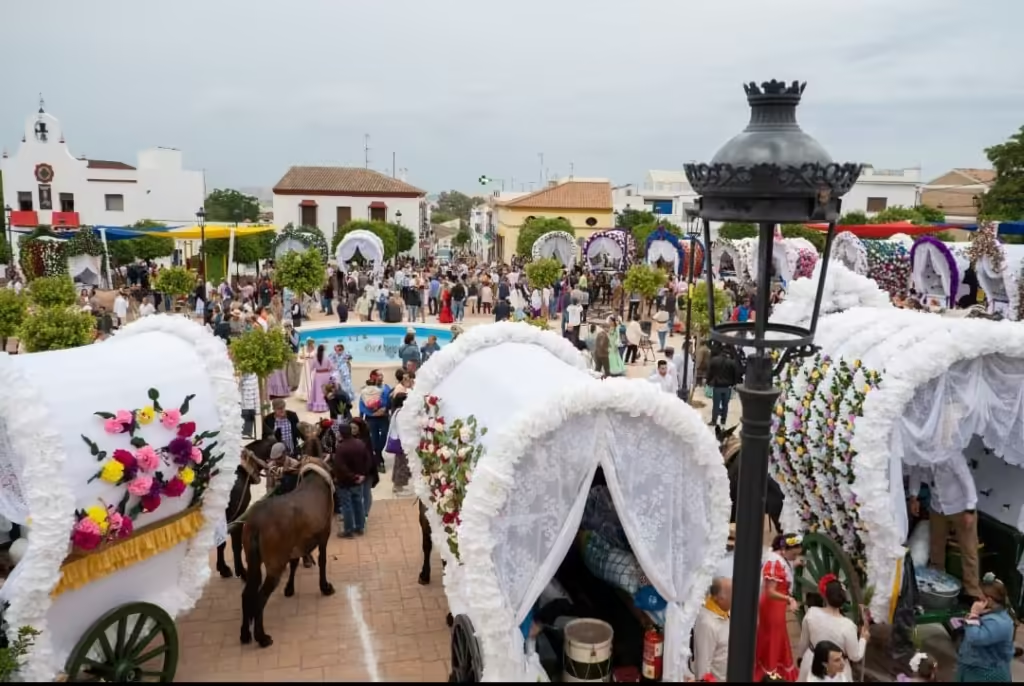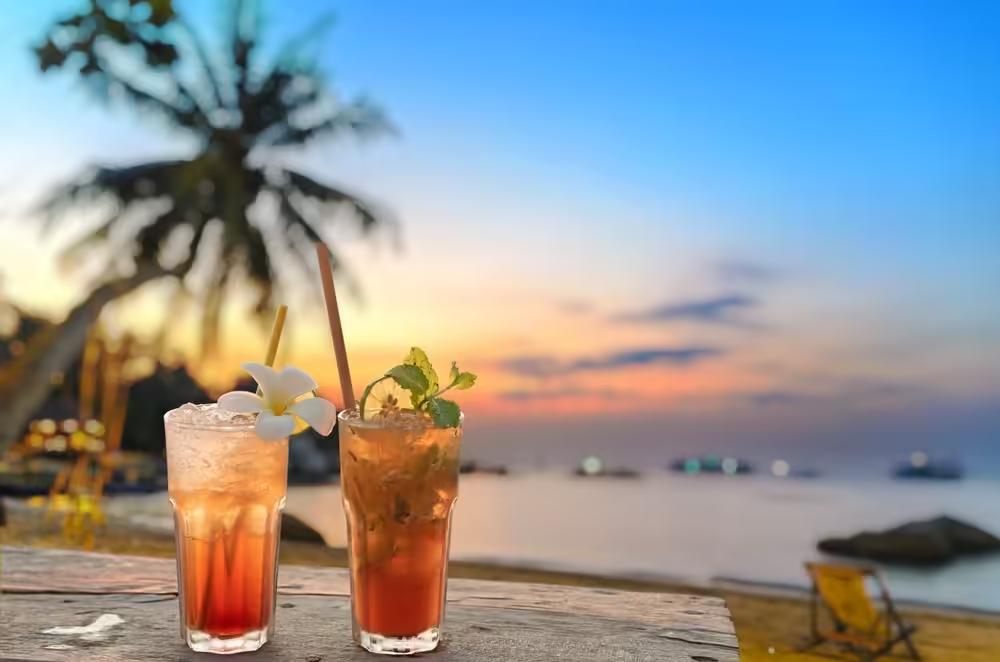What Is a Romería? Spain’s Pilgrimage Festivals Explained
A romería is a traditional Spanish pilgrimage, usually to a small countryside chapel or hermitage, held in honour of a patron saint or the Virgin Mary. It’s not just a religious event, though. A romería is a big social occasion, full of music, dancing, food, horses, decorated carts, and people in traditional clothing that lasts all day (or even all weekend).
These events bring entire towns (and sometimes cities) together, turning what starts as a spiritual procession into a fun, open-air celebration. Imagine a mix between a country fair, a parade, and a family reunion, and you’ll get the idea.
They Happen Everywhere: Even in Tiny Villages
One of the best things about romerías is how widespread they are. While some of the most famous ones attract tens of thousands, you’ll also find smaller romerías in the tiniest villages across Spain, from the olive-growing hills of Andalucía to the green valleys of northern Galicia.
Even places you’ve never heard of before likely have their own romería each year, and for many locals, it’s one of the most important events in the calendar.
When Do They Take Place?
Most romerías happen in spring and early summer, with May being the busiest month. That’s partly because May is traditionally dedicated to the Virgin Mary in the Catholic Church, but it’s also when the weather is perfect, not too hot, not too cold, for walking through the countryside.
You’ll often see towns starting their celebrations in late April and continuing into early June, especially around weekends and local saints’ days.
How to Find Out About Local Romerías
If you’re living in or visiting Spain and want to join in a local romería, here’s how to track them down:
- Check your local town hall’s website or Facebook page – Many post schedules and posters there.
- Look for banners and posters in town squares or churches – They’re usually displayed weeks in advance.
- Ask locals – Most people will happily tell you when and where their romería takes place.
- Follow local social media groups – Especially pages related to fiestas, parishes (parroquias), or cultural associations.
Keep in mind that smaller romerías may not have much online publicity, so word of mouth is often your best source.

A Bit of History
The tradition of romerías began in the Middle Ages, when pilgrims would travel to sacred sites to pray, ask for miracles, or fulfil religious promises. Over time, these journeys became annual celebrations, blending Christian devotion with local customs, music and food.
The word romería comes from ‘romero,’ which originally meant someone travelling to Rome. In Spain, the term evolved to mean anyone taking part in a local pilgrimage.
What Happens During a Romería in Spain?
Here’s what to expect if you join a romería:
- The procession: People walk, ride horses, or travel in decorated wagons to the local hermitage. Some go on foot as an act of devotion.
- Traditional clothing: Expect flamenco dresses, riding gear, and beautifully decorated carts or carriages.
- Music and dancing: You’ll hear folk songs, flamenco, or regional music depending on the area. Groups often bring guitars, tambourines and speakers.
- A religious service: Once at the chapel, a priest usually holds mass in honour of the saint or Virgin being celebrated.
- A countryside picnic or party: Families and friends set up camp to eat, drink and celebrate. In some areas, it goes on into the night.
- The return: Later in the day, or even the next morning, everyone heads back, often singing and dancing the whole way home.
Now let’s look at some of the most famous romerías in Spain…
Top Romerías to Experience in Spain
1. El Rocío – Huelva, Andalucía
Held around Pentecost (usually May or June), El Rocío is the most famous romería in Spain. Over a million people travel, some from as far as Sevilla and Cádiz, on foot, horseback, or in ox-drawn carts to the village of El Rocío in Doñana National Park.
They go to honour the Virgen del Rocío, a beloved statue kept in the village church. The final night features an emotional and powerful moment called the Salto de la reja (the leap of the rail), when men from Almonte leap over the altar rail to carry the Virgin through the streets.
Even if you’re not religious, the colours, costumes, and sheer scale of this event are unforgettable.
2. Romería de la Virgen de la Cabeza – Andújar, Jaén
Held the last weekend of April, this is one of the oldest and most spiritual romerías. Pilgrims travel into the Sierra Morena mountains to a hilltop sanctuary dedicated to the Virgen de la Cabeza, often walking long distances to get there.
It’s a more physically demanding romería, with a powerful sense of faith, history, and rural Andalucian culture.
3. San Isidro – Madrid and rural towns (May 15)
Madrid’s romería honours San Isidro Labrador, the city’s patron saint and the protector of farmers. In the capital, thousands gather in La Pradera de San Isidro, a riverside park, dressed in traditional chulapo costumes to eat, drink and enjoy concerts.
In farming towns across central Spain, this day also marks a special blessing of fields, livestock, and even tractors.
4. Romería del Rocío Chico – Almonte, Huelva
A smaller version of the main El Rocío pilgrimage, this one happens in August and commemorates the town’s historical resistance to Napoleonic troops in the 19th century. It’s a more intimate version of the bigger event, but still full of charm and deep devotion.
5. Romería de la Virgen del Monte – Cazalla de la Sierra, Seville
In the hills of northern Sevilla, this romería is packed with local flavour. Pilgrims travel to the Ermita de Nuestra Señora del Monte, usually in mid-May, and celebrate with local wine, music, and dancing beneath the trees. It’s one of the best ways to experience a rural Andalucian romería without the overwhelming crowds.
6. Romerías in Northern Spain – Galicia, Asturias and the Basque Country
These regions also have their own unique romerías, often involving bagpipes, cider, grilled meat and seafood, and dances like the muñeira.
Look for:
- Romería de San Froilán (Lugo, Galicia – October)
- Romería de Covadonga (Asturias – early September)
- Local mountain pilgrimages throughout the Basque Country in summer
Why You Should Experience a Romería
Whether you’re religious or not, joining a romería is a chance to connect with real Spanish culture. It’s about community, tradition, gratitude, and joy, and it’s something many tourists miss entirely.
If you’re staying in a rural town or village, ask around or check community boards. You might find that the best romería is the one you never planned to attend.
Main image: Shutterstock/Silvia B. Jakiello
Share this content:




1 comment